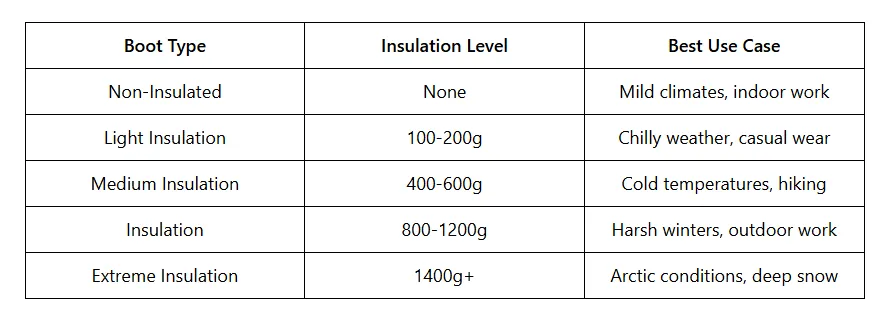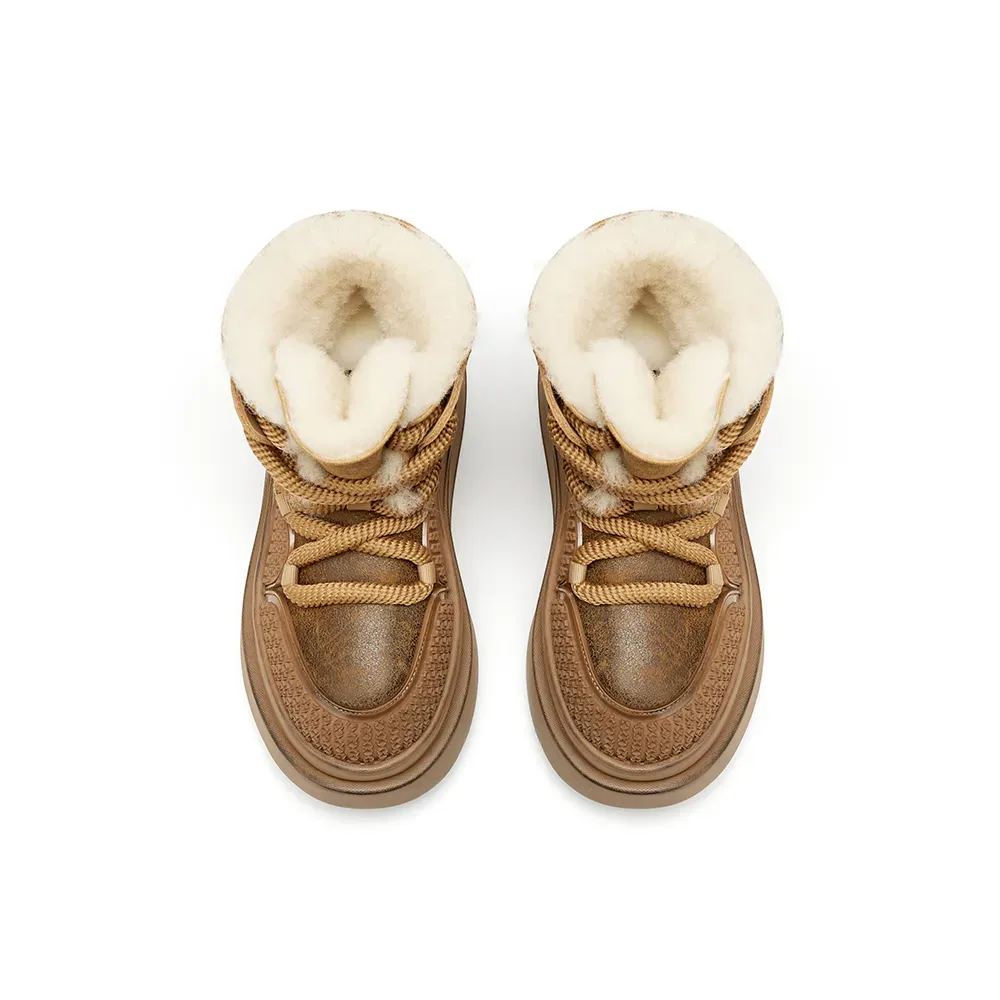Fastest Delivery Time about 7 Days
Low MOQ Manufacture Quickly
OEM&ODM both Available
0-1 One Stop Manufacturing Service
24/7 Customer Support
Online Help By Our Agents
100% Secure Payments
T/T/Paypal/Cash
Choosing the right boots for winter is essential for comfort and protection. Insulated boots help keep your feet warm, but how do you know if a pair is truly insulated? This guide will help you identify insulated boots and explain why they matter.
Boots protect your feet from extreme temperatures, snow, and moisture. Insulated boots provide an extra layer of warmth, reducing the risk of frostbite and discomfort. Choosing the right pair can enhance both safety and performance in cold environments.

Look at the inner lining and tags. Common insulation materials include 3M Thinsulate™, PrimaLoft®, and natural wool. These materials trap heat while allowing moisture to escape.

Insulated boots often feel padded or thicker inside. Compare them with non-insulated boots to notice the difference.
Most brands label their boots with insulation details. Check for grams of insulation (e.g., 200g, 400g) on product descriptions or inside the boots.
Cold feet can lead to discomfort, numbness, and even frostbite. Proper insulation keeps your feet warm and prevents heat loss.
Whether you’re hiking, working outdoors, or just walking in the city, insulation improves your overall experience.
Prolonged exposure to cold can cause circulation issues. Insulated boots reduce these risks, keeping your feet safe and healthy.

High-activity levels generate more body heat, meaning less insulation is needed. Low-activity levels require heavier insulation.

Full-grain leather and waterproof membranes help keep feet dry in snowy or wet conditions. Consider materials that match your climate and lifestyle.
Pairing insulated boots with merino wool socks enhances warmth and moisture-wicking. Avoid cotton socks, as they retain moisture and make feet colder.
Thermal insoles add another layer of insulation, ideal for extreme cold. Heated insoles are also available for extra warmth.
Moisture reduces insulation efficiency. Use boot dryers or stuff them with newspaper overnight to keep them dry.
Insulated boots are essential for warmth, comfort, and foot protection in cold weather. By checking the materials, labels, and insulation levels, you can ensure you have the right boots for your needs. Choose insulation based on your activity level and climate to maximize comfort.
Low MOQ Manufacture Quickly
0-1 One Stop Manufacturing Service
Online Help By Our Agents
T/T/Paypal/Cash